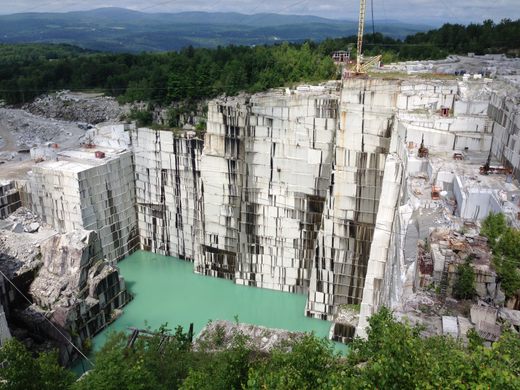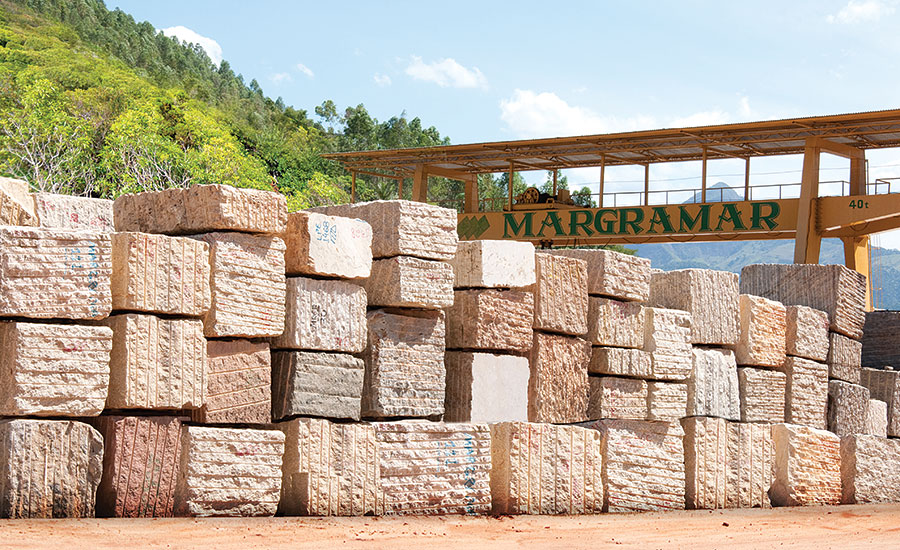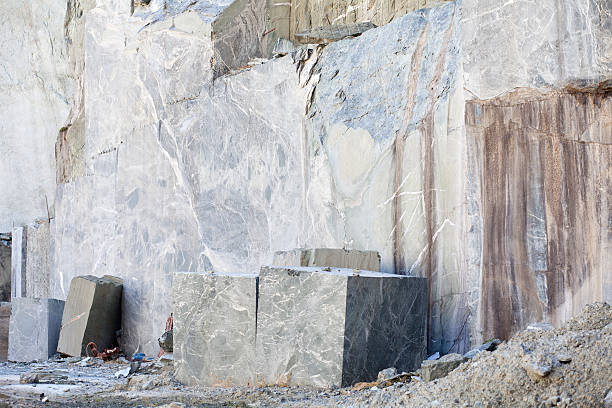From Rock to Story: A Comprehensive Guide to Granite Quarries in Rustenburg
From Rock to Story: A Comprehensive Guide to Granite Quarries in Rustenburg
Blog Article
From Quarry to Countertop: Understanding the Refine of Granite Extraction
Granite, a preferred selection for counter tops as a result of its resilience and visual charm, goes through a fascinating trip from the depths of a quarry to its final location in our kitchen areas and washrooms. As we look into the elaborate process of granite removal, we will reveal the secrets behind the development of these impressive stone deposits, check out the strategies and tools utilized in quarrying, and untangle the steps associated with transforming raw granite blocks into polished and ended up countertops. From the geological beginnings to the precise craftsmanship, this trip assures to expose the amazing tale behind the development of these practical and ageless items.
Formation of Granite Deposits
The formation of granite deposits is a geologic procedure that entails the progressive air conditioning and solidification of magma deep within the Planet's crust. Granite, a common kind of igneous rock, is formed when molten magma cools off and strengthens over extended periods of time. This process occurs below the Planet's surface, normally at midsts of several kilometers.
These minerals integrate to provide granite its particular texture and look. The slow-moving cooling process enables for the development of big crystals, which offer granite its unique rough texture.
The development of granite deposits is often connected with structural activity, such as the crash of continental plates or the ascent of magma from the mantle. The intense warm and pressure created throughout these processes add to the melting of rocks and the succeeding formation of magma.
Over numerous years, the solidified granite is revealed at the surface area via erosion and uplift. This is when granite deposits can be quarried and extracted for different applications, consisting of countertops, floor covering, and building and construction products.

Quarrying Techniques and Tools
Quarrying methods and tools play an important role in the effective removal of granite deposits for various industrial applications. The process involves the use of specialized tools and machinery that make sure the smooth and risk-free removal of granite blocks from the quarry site.
Among the primary methods made use of in granite quarrying is piercing (granite quarries in rustenburg). This entails the usage of boring makers furnished with diamond-tipped drill little bits. These machines develop openings in the rock surface, enabling for the insertion of explosive charges. When the costs are detonated, the resulting explosion breaks the granite right into manageable blocks.
In enhancement to boring, cutting and splitting devices are likewise necessary in granite quarrying. Cord saws and high-pressure water jets are typically utilized to cut with the granite. These methods are efficient in dividing the granite into private blocks, which can after that be more refined.
Transporting and filling devices are essential in the transport of granite obstructs from the quarry to the processing center. Durable trucks and forklifts are frequently made use of to move the blocks, ensuring their efficient and risk-free transfer.

Extraction and Transportation of Granite Blocks
With the conclusion of the quarrying strategies and tools area, we now transform our interest to the essential procedure of removing and moving granite blocks. As soon as the granite has actually been effectively quarried, it is essential to draw out the blocks from the quarry face. This is generally done making see use of heavy machinery, such as excavators or front-end loaders, which are geared up with large blades or rippers to damage the blocks without the bordering rock.
After the blocks have been removed, they require to be transferred to the handling facility. This is generally done using specialized vehicles or trailers that are qualified of carrying the tremendous weight of the granite blocks. These transport vehicles are created to make sure the reliable and safe activity of the blocks, with functions such as enhanced frames, hydraulic systems, and safe and secure tie-downs.
The transportation process needs careful planning and control to ensure the blocks reach their destination without damages. This entails selecting the proper routes, thinking about aspects such as roadway conditions, weight constraints, and the size of the blocks. It is likewise critical to secure the blocks correctly throughout transport to avoid gliding or shifting, which might bring about accidents or damage to the blocks.
Cutting and Shaping Granite Pieces
To produce sleek and precise granite slabs, a careful process of shaping and cutting is employed. When the granite blocks have been drawn out from the quarry and carried to the facility, they prepare to undergo this important step. The reducing procedure begins with using specific devices such as ruby cable saws or high-powered saw blades. These tools can slicing through the hard granite with precision and efficiency. The pieces are very carefully reduced to the wanted density, thinking about any type of details requirements or design choices.
After the first More about the author cutting, the slabs are after that shaped to meet the wanted requirements. This is done using a combination of saws, mills, and sprucing up tools. The sides of the pieces are smoothed and rounded, providing a completed and improved look. The surface of the pieces is likewise brightened to achieve a shiny and reflective finish.

Polishing and Finishing the Granite Countertops
The last action in the granite extraction process includes the thorough polishing and finishing of the granite kitchen counters. After the granite pieces have been cut and shaped to the preferred measurements, they go through a collection of therapies to enhance their appearance and longevity.
The first phase of the polishing procedure is called grinding. Throughout this phase, crude diamond abrasives are used to eliminate any type of flaws and smooth the surface area of the granite. granite quarries in rustenburg. This procedure is essential for achieving an attire and level surface
When the grinding is full, better ruby abrasives are used to more improve the surface of the granite. This highlights the all-natural elegance of the rock and offers it a reflective and shiny appearance.
After the polishing stage, the granite countertops are thoroughly cleaned to get rid of any kind of dirt or particles. This is complied with by the application of a sealer, which assists safeguard the rock from scrapes and spots.
Final Thought
To conclude, the process of granite removal entails various stages, consisting of quarrying, extraction, transport, reducing, forming, polishing, and ending up. Granite down payments are find out here developed over millions of years through geological procedures. Quarrying methods and devices are utilized to extract granite blocks, which are then transported to the cutting and forming stage. The granite pieces are brightened and completed to create beautiful kitchen counters. This process requires mindful planning, skilled employees, and advanced equipment to make sure the quality and resilience of the end product.
As we dig into the complex process of granite removal, we will certainly discover the tricks behind the formation of these impressive stone down payments, explore the methods and tools employed in quarrying, and unwind the steps included in changing raw granite obstructs into polished and finished counter tops (granite quarries in rustenburg). These approaches are effective in dividing the granite right into individual blocks, which can after that be further processed
With the conclusion of the quarrying techniques and devices area, we currently turn our focus to the essential procedure of removing and transferring granite blocks.To develop polished and exact granite pieces, a precise process of forming and cutting is utilized.In verdict, the procedure of granite removal entails various stages, including quarrying, extraction, transport, reducing, forming, brightening, and completing.
Report this page